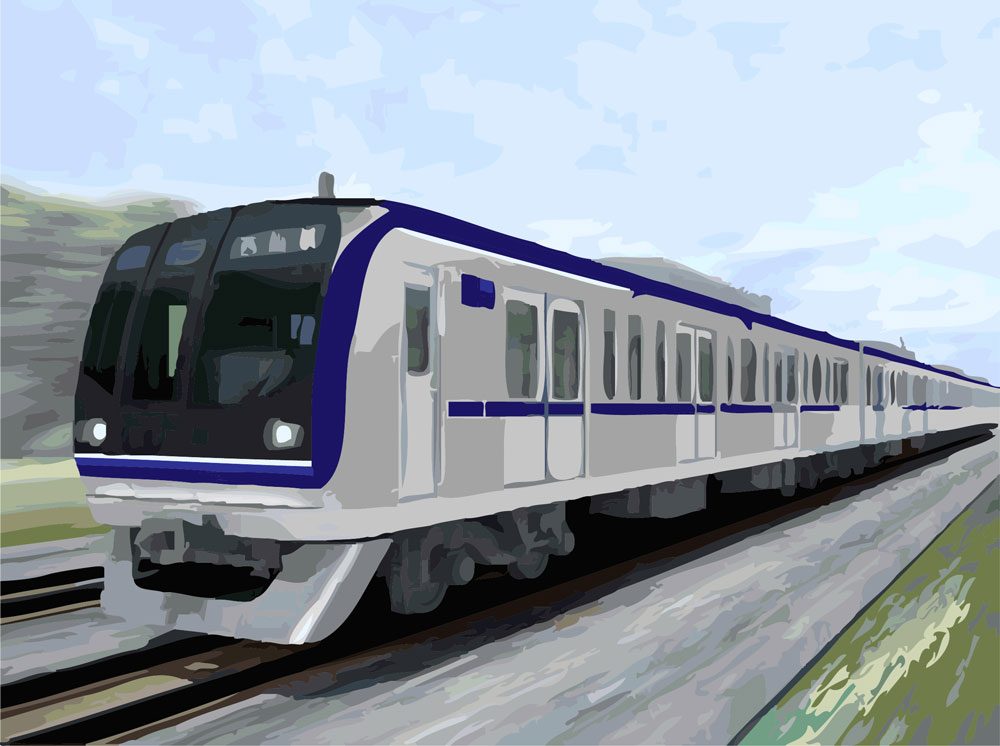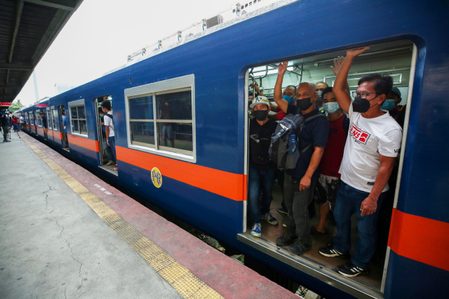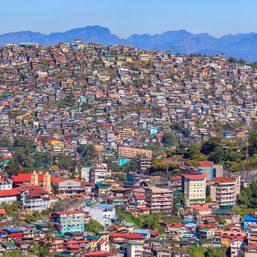SUMMARY
This is AI generated summarization, which may have errors. For context, always refer to the full article.

MANILA, Philippines – The Department of Transportation (DOTr) will push through with the long-delayed Mindanao Railway Project (MRP) even without the expected funding from China, although the project still remains in the pre-construction stage.
“We decided to pursue Phase 1 of the MRP despite withdrawal of prior funding commitment from the government of China. While looking for funding sources, various pre-construction activities show we are not dropping the project,” Transportation Secretary Jaime Bautista said.
The MRP, which will be the first railway project in Mindanao, is far behind schedule. Construction for Phase 1, or the portion connecting Tagum City to Digos City through Davao City, was supposed to begin in the second quarter of 2022.
Bautista remains firm that the project will push through, with land acquisition activities ongoing along the target alignment from Tagum to Digos. The government is also preparing resettlement sites for displaced residents, such as the Tagum Train Village, which is scheduled for turnover in the coming months, according to Bautista.
But where will the money for construction come from? The government has yet to identify a specific source of funding.
President Ferdinand Marcos Jr., speaking at the DOTr’s 125th anniversary in Davao City, said he was ordering the DOTr and the Department of Finance “to work in tandem to explore financing sources for the 103-kilometer Tagum-Davao-Digos railway.”
“This ambitious project has been stalled by lack of funding, so let us go and hunt for the right funding engine that will pull this project to the finish line,” Marcos said on Wednesday, February 7. “I have been briefed that financing railway models can be creatively packaged in a hybrid way with each component of the project undertaken, underwritten by different stakeholders.”
For instance, the President said construction of the railway could be taken up by private investors, while rolling stock – or the engines and trains that run on the railway – could be financed through official development assistance, or vice versa. (READ: Philippines turns its back on Chinese loans for 3 railway projects)
Previously, the transportation secretary told the media that there have been promising discussions with an “Asian ambassador,” but he gave no further details. In the past, the government has sought funding through partnerships with the private sector or official development assistance from the Asian Development Bank and the Japan International Cooperation Agency to pursue its big-ticket infrastructure projects.
An 88-year-old dream
A railway for the island has remained a presidential promise for 88 years ever since President Manuel Quezon first floated the idea in 1936. President Fidel Ramos revived interest in the railway when he included it as part of his administration’s Medium Term 1993-1998 Philippines Development Plan. Under the plan, the Ramos government was supposed to conduct a feasibility study for a build-operate-transfer program for “Mindanao railways.”
Every president since then has acted towards making a railway in Mindanao a reality, although none have succeeded:
- President Joseph Estrada allocated P10 million for the creation of the Mindanao Rail System Task Force on June 28, 1999.
- President Gloria Arroyo abolished Estrada’s task force and later created her own Mindanao Railway Project Office on May 25, 2006. By May 2010, a feasibility study for a railway between the cities of Cagayan de Oro and Iligan was completed.
- Under President Benigno Aquino III, the National Economic and Development Authority sought bidders for “consulting services for the feasibility study of the Mindanao Railway Project” in June 2015.
The MRP then became a centerpiece of President Rodrigo Duterte’s campaign, but the railway didn’t even see construction start before he left office. (READ: Build, Build, Build: Mapping the Duterte administration’s infrastructure legacy)
Bautista hopes that, under the Marcos administration, the completion of at least the first phase of the project would finally “concretize the master rail plan” for Mindanao.
The P81.6-billion MRP Phase 1 project will stretch more than 100 kilometers along eight stations. It’s expected to serve 122,000 passengers a day. The Tagum-Digos railway section will cut travel time between the two cities from the current three hours to just one hour.
The DOTr also recently signed a consultancy contract for the joint venture of Deloitte Touche Tohmatsu India LLP and ASA Law Firm to conduct the pre-feasibility study for the MRP Phase III. The third phase of the railway could start at the Laguindingan Airport in Misamis Oriental and run for 54 kilometers through Cagayan de Oro City and the rest of the region.
“Sigurado po ako na sa pamamagitan ng mga proyektong ito, makakamit natin ang mas matatag, mas maginhawa, at mas masaganang buhay para sa lahat, lalong-lalo na po sa mga kababayan natin dito sa Mindanao,” Bautista said during the contract signing on Sunday, February 4.
(I’m certain that through these projects, we’ll attain a more stable, more comfortable, and more prosperous life for all, especially our countrymen in Mindanao.)
The MRP in its entirety, which could have up to 10 phases, will stretch 1,544 kilometers around the entire island, connecting Davao, General Santos, Cagayan de Oro, Iligan, Cotabato, Zamboanga, Butuan, Surigao, and Malaybalay. – Rappler.com
1 comment
How does this make you feel?



![[Under 3 Minutes] When will we see modern jeepneys on the road?](https://www.rappler.com/tachyon/2024/04/francisco-motors-modern-jeepney-prototype-1.jpg?resize=257%2C257&crop=590px%2C0px%2C1012px%2C1012px)









I appreciate President Marcos Jr.’s decision to continue the 88-year-old dream project: Mindanao Railways Project. I also appreciate the effort of Transportation Secretary Jaime Bautista in advising President Marcos Jr. to do so. If President Marcos Jr. succeeds in implementing at least Phase I of the project, he will outperform his predecessor Presidents. Secondly, if he can get the US Government to fund this project (in part at least), this would make for a great counterpropaganda against China. Lastly, having announced it in Davao City is a symbolic and subtle rebuke of one of the campaign promises of former President Digong Duterte.